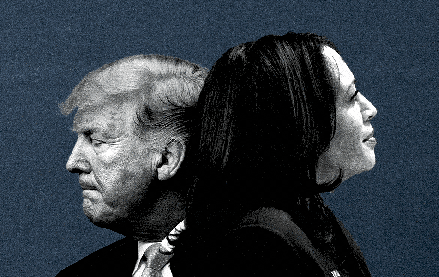DTC hydration brand Buoy leans on influencers’ authenticity to reach people living with chronic illness

Direct-to-consumer hydration brand Buoy is working with influencers who have chronic illnesses to create organic content. In doing so, the 5-year-old company is looking to show how its hydrating wellness drops can help people living with chronic illness, as well as its commitment to a widely underrepresented segment of the population that includes millions of people who live in isolation due to their conditions.
- Teaming up with TikTok influencers who belong to that customer segment (people living with chronic illness)
- Offering a lifetime discount for those using Buoy products to manage illness
- Donating to nonprofit supporting chronic illness patients
- Focusing marketing efforts on the people in the niche segment who benefit from Buoy’s products, rather than on the products themselves
Buoy teamed up with four influencers for a new campaign: TikTok creators Paula Sojo, Renee Welch, Ashley Feasel and Dom Snyder who live with Crohn’s disease, ulcerative colitis, postural orthostatic tachycardia syndrome and diabetes. Together, they created a six-minute cinematic video, “To Be Seen,” that will appear on YouTube. The creators will also post content based on the video on their channels to boost Buoy’s brand-awareness.
“We chose these influencers because they’re the most authentic brand ambassadors we could ever have,” said Eddie Zelenak, Buoy’s founder and CMO, who added that he discovered each content creator through his For You page on TikTok. “Their stories about staying hydrated with Buoy can be anywhere from inspiring to borderline emotional.”
In sharing their stories of chronic illness, Zelenak said he found himself compelled by the creators’ courage and vulnerability. He said Buoy offers a 35% lifetime discount to customers who use the brand’s products to manage an illness as part of its commitment to the chronic illness community. In addition, the company donates one bottle of hydrating drops for every one sold on its website to a nonprofit that supports chronic illness patients and their families. Buoy plans to continue to partner with creators in the chronic illness community, and is connecting more of them through TikTok.
Buoy’s new campaign was designed with nostalgia in mind, and highlights the difficulties of coping with invisible illness in high school, as that is when many people are first diagnosed with chronic illness. Round Two Agency assisted Buoy in creating the “To Be Seen” video for the campaign.
The idea for the campaign stemmed from Buoy’s organic launch on Amazon three years ago, when the brand’s sixth customer left a review. It was written by a mom whose daughter had been recently diagnosed with POTS. “We learned a little bit about POTS that day, but we learned more about an overlooked community of people living with chronic illnesses hidden in plain sight,” said Zelenak.
It is unclear how much of Buoy’s advertising budget is allocated to TikTok influencers, as Zelenak would not share overall budget specifics. Zelenak noted that the company decided to invest 95% of its campaign budget into the chronic illness community and organic content marketing, and that this is the company’s first significant marketing campaign, with a focus on those who use Buoy’s products and benefit from them the most rather than the products themselves.
Leveraging consumer feedback for advertising is commonplace, especially for DTC brands. “This campaign exemplifies two important ways that DTC brands have rewritten the marketing playbook: leveraging critical consumer insights and the advocacy of influencers for social virality to stretch reach,” said Margo Kahnrose, CMO at omnichannel marketing platform Skai.
Jay Choyce Tibbitts, associate director, social strategy, at advertising agency Deutsch NY said he believes Buoy’s use of TikTok creators’ real human stories will benefit the brand.
“These videos weren’t made up in a marketing department meeting,” said Choyce Tibbitts. “They are rooted in these creators’ everyday struggles with chronic illnesses, which brings relatability and authenticity to the campaign. And with creators ranging from followings of 33,000-150,000 on TikTok, the potential reach of the campaign is automatically extended to their audience by association.”
For this particular campaign, Buoy focused on the people who use and benefit from its products the most. “We told their stories, not ours, and we think it’s time for more brands to take a similar approach,” Zelenak said.
Buoy’s strategy going forward is to continue to bring chronic illness to the forefront of societal conversations through TikTok. “Brands that take risks and show real people with real stories will always find an audience that relates on TikTok,” said Ryan Detert, CEO of artificial intelligence social data and conversion technology company Influential. “For a highly specific product like this, the only way to capture attention is through authenticity.”
More in Marketing

Hyve Group buys the Possible conference, and will add a meeting element to it in the future
Hyve Group, which owns such events as ShopTalk and FinTech Meetup, has agreed to purchase Beyond Ordinary Events, the organizing body behind Possible.

Agencies and marketers point to TikTok in the running to win ‘first real social Olympics’
The video platform is a crucial part of paid social plans this summer, say advertisers and agency execs.

Where Kamala Harris and Donald Trump stand on big tech issues
The next U.S. president is going to have a tough job of reining in social media companies’ dominance and power enough to satisfy lawmakers and users, while still encouraging free speech, privacy and innovation.








